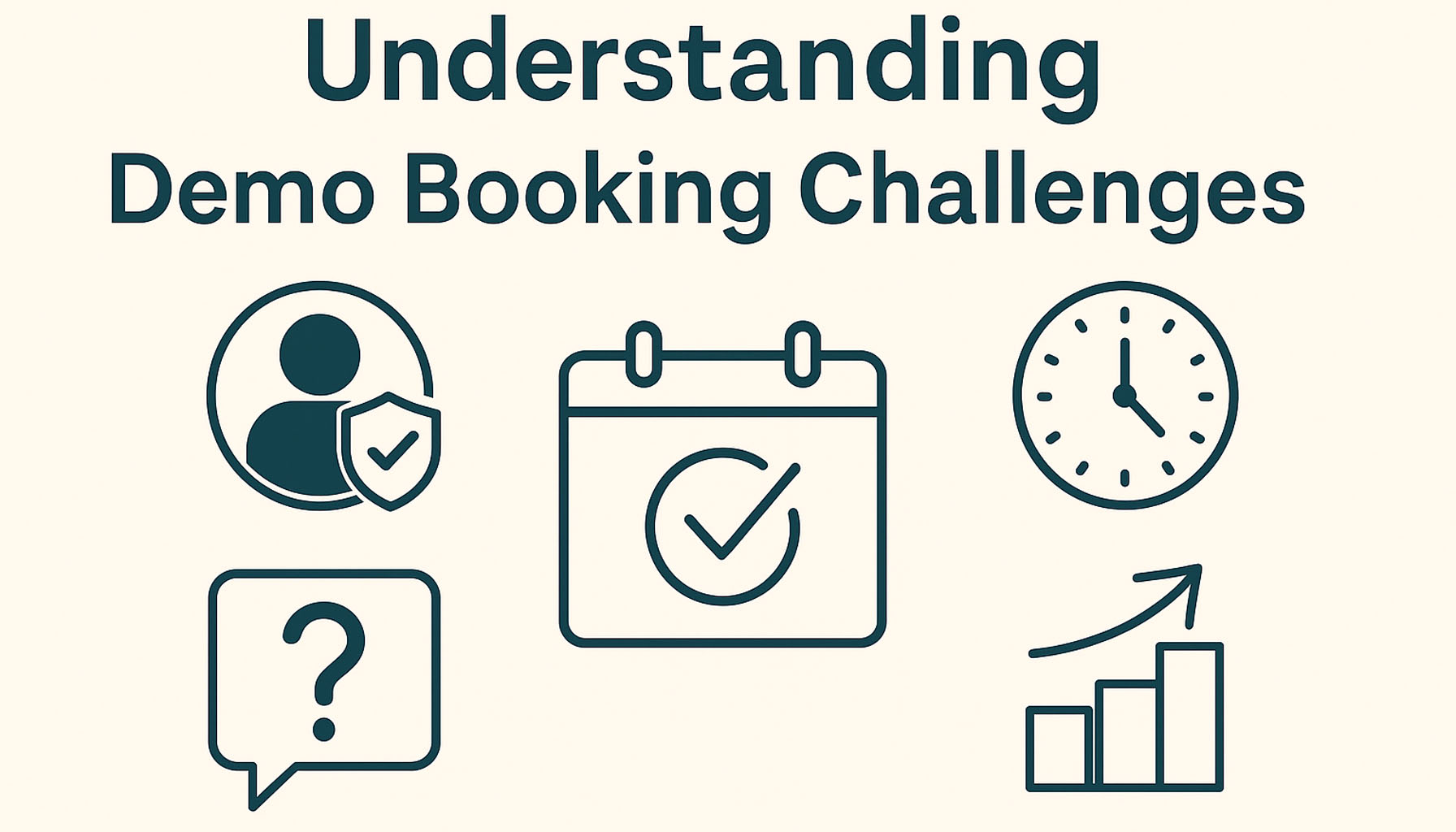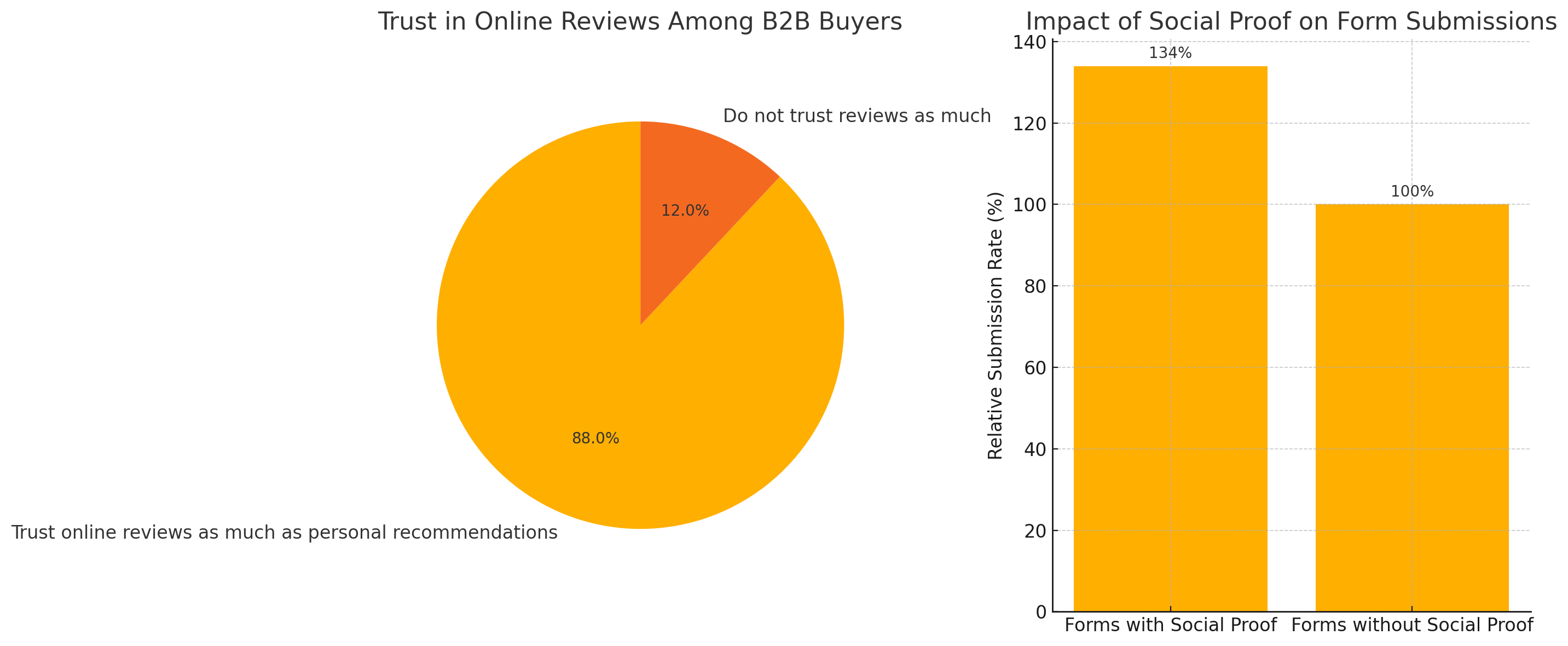
B2B software is essential for improving efficiency and productivity in businesses. In this ever-changing market, it’s vital to secure demo bookings to effectively communicate the benefits of software solutions.
The SaaS industry in the UK is rapidly expanding, with companies turning to innovative technologies to remain competitive. Demo calls have become valuable resources for connecting with potential clients, showcasing product features, and ultimately increasing sales in the B2B software industry.
Understanding Demo Booking Challenges
Booking demos for your SaaS product can be a challenging task. Several factors may come into play that can hinder potential customers from scheduling a demo with you. Here are some common challenges you might face:
Common Challenges in Booking Demos
- Lack of Trust: Potential customers may be hesitant to book a demo if they are unfamiliar with your brand or product.
- Time Constraints: Busy schedules and conflicting priorities can make it difficult for prospects to find time for a demo.
- Unclear Value Proposition: If prospects do not clearly understand the benefits and value of your product, they may be less inclined to book a demo.

Overcoming these challenges requires a strategic approach that focuses on understanding your customers’ needs and addressing their concerns effectively. Here are some strategies you can implement:
Strategies to Overcome Demo Booking Challenges
- Build Trust through Social Proof: Use testimonials, reviews, and case studies to showcase the success stories of your existing customers. This will help establish credibility and build trust with potential customers.
- Offer Flexible Scheduling Options: Provide multiple options for demo timings to accommodate different schedules. Consider offering on-demand demos or recorded sessions for prospects who may have time constraints.
- Communicate the Value Clearly: Craft compelling messaging that clearly communicates the unique value proposition of your product. Highlight specific pain points your solution addresses and the benefits it offers.
By understanding these challenges and implementing effective strategies, you can increase your chances of booking more SaaS demos and ultimately driving conversions.
Strategies to Increase Demo Requests
- Leveraging Social Proof: Utilize customer testimonials, reviews, and industry recognition to establish credibility and trust, encouraging more demo bookings.
- Optimizing Online Presence: Enhance your website and landing pages with clear Call-to-Actions (CTAs), conducting A/B testing to identify the most effective variations for boosting conversion rates.
- Implementing Referral Programs: Motivate satisfied customers to recommend your software to their network by offering incentives, driving an increase in demo requests.
Effective Marketing Tactics for Demo Bookings
When it comes to securing demo bookings for your B2B software, having a solid marketing strategy in place is crucial. Here are some effective tactics you can implement:
1. Utilize Email Marketing Campaigns
Email marketing remains one of the most powerful tools for reaching out to potential customers. Here are some tips to make your email campaigns more effective:
- Craft Compelling Subject Lines: The subject line is the first thing recipients see, so make it attention-grabbing and relevant to increase open rates.
- Personalize Your Content: Tailor your email content based on the recipient’s interests or pain points. Personalization can significantly improve engagement and conversion rates.
2. Engage in Targeted Advertising
While organic reach is important, sometimes you need to invest in paid advertising to get in front of your ideal audience. Consider using platforms like LinkedIn and Google Ads for targeted advertising. Here’s how:
- Define Your Target Audience: Identify the specific demographics, industries, or job titles that align with your ideal customer profile.
- Create Tailored Messages: Craft ad copy that speaks directly to the pain points or needs of your target audience. Highlight the unique value proposition of your software.
3. Implement Prompt Follow-Up Strategies
After a potential customer expresses interest in a demo, it’s essential to follow up promptly. Here’s why follow-up is crucial:
- Nurture Leads Towards Conversion: Many leads require multiple touchpoints before making a decision. Use follow-up emails or calls to provide additional information, answer questions, and address any concerns.
- Personalize Communication: Whenever possible, personalize your follow-up messages based on previous interactions or specific interests shown by the lead.
By implementing these effective marketing tactics—utilizing email marketing campaigns, engaging in targeted advertising, and implementing prompt follow-up strategies—you can increase your chances of securing demo bookings for your B2B software.
Alternative Demo Booking Methods That Work
While traditional demo bookings are effective, there are other methods that can complement them and provide a more comprehensive experience for potential customers. Here are some alternative demo booking methods that work:
1. Interactive Product Tours
Instead of relying solely on scheduled demos, consider offering interactive product tours. These guided walkthroughs allow prospects to explore your software’s features and functionalities at their own pace. By providing an engaging and self-directed experience, you can capture the attention of users who may not have the time or availability for a live demo.
2. Free Trials
Another powerful alternative is offering free trials of your software. This allows potential customers to experience your product firsthand without any commitments. During the trial period, you can provide in-app tutorials and user guides to assist users in navigating through your software’s features. This combination of hands-on experience and supportive resources can significantly increase the chances of conversion.
3. In-App Tutorials
In addition to user guides, incorporating in-app tutorials can be highly beneficial during the trial phase. These short video or interactive lessons embedded within your software can help users understand specific features or workflows that may be complex or less intuitive. By proactively addressing potential roadblocks, you enhance the overall user experience and increase the likelihood of successful adoption.
4. User Guides
While interactive content is valuable, don’t underestimate the power of well-crafted user guides. Create comprehensive documentation that outlines key functionalities, best practices, and tips for maximizing value from your software. Make these resources easily accessible within your application or through email communication during the trial period.
By implementing these alternative methods alongside traditional demo bookings, you create a more flexible and personalized approach to showcasing your product. Remember, every prospect is unique, so offering multiple avenues for exploration increases the chances of resonating with different individuals’ preferences and learning styles.
Optimizing Your Demo Booking Processes for Success
Optimizing your demo booking processes can significantly impact your conversion rates. Here are two key areas to focus on: lead capture form optimization and addressing web conferencing software issues.
Upgrading Lead Capture Forms
Lead capture forms are often the first point of contact between you and your potential customers. To increase the chances of prospects submitting their details for a demo call, it’s essential to keep these forms short yet informative. Here are some tips for optimizing your lead capture forms:
- Minimize fields: Only ask for essential information such as name, email address, and phone number. The more fields you have, the less likely prospects will complete the form.
- Use clear and concise language: Avoid jargon or complex terms that may confuse prospects. Use simple language that clearly explains what they will gain from the demo.
- Highlight benefits: Clearly communicate the value proposition of your product or service in the form itself. Let prospects know how the demo will address their pain points or help them achieve their goals.
- Include social proof: Incorporate testimonials or case studies from satisfied customers to build trust and credibility. This is crucial as social proof plays a significant role in influencing potential customers’ decisions.
Addressing Web Conferencing Challenges
Even with an optimized booking process, technical issues during demos can hinder your chances of closing deals. It’s crucial to ensure a seamless experience for both parties involved by addressing common web conferencing challenges. Here are some steps you can take:
- Test your equipment: Before each demo, check that your microphone, camera, and internet connection are working properly. Conduct trial runs to identify any potential issues in advance.
- Provide clear instructions: Send detailed instructions on how to join the web conference to both participants ahead of time. This includes information about the platform being used and any specific steps they need to follow.
- Have a backup plan: In case of technical difficulties, have alternative methods ready for conducting the demo such as phone calls or screen sharing through other applications.
- Stay flexible: Be understanding if unexpected issues arise during the demo. Adapt your presentation style or content based on the circumstances to maintain engagement.
By optimizing your lead capture forms and addressing web conferencing challenges, you can improve your demo booking processes and ultimately increase conversion rates.
Measuring Success and Nurturing Leads After a Demo
To fully leverage the power of demo calls, it’s essential to measure their success and implement effective strategies for nurturing leads. This involves using analytics tools such as Google Analytics and specialized SaaS metrics platforms to gain detailed insights into how well your demo process is performing. Here are some key performance indicators (KPIs) to focus on:
- Demo-to-win ratio: This metric tracks the number of demos that result in paying customers. It gives you an idea of how effective your presentations are.
- Average deal closure time: By measuring the time it takes from the first contact with a lead to closing the sale, you can identify any delays or bottlenecks in your sales process.
- Lead engagement levels post-demo: It’s important to monitor how leads interact with any follow-up content, emails, or resources you send them after the demo. This will help you understand their level of interest and engagement.
Use these data points to continuously improve your approach. When it comes to nurturing leads after a demo, it’s crucial to communicate with them in a personalized manner based on their specific interests. This could involve sharing tailored resources, case studies, or expert consultations that further highlight the value of your product. Automation tools can be helpful in streamlining this process while still maintaining a personal touch.
However, it’s important to note that not all follow-ups are effective. In fact, poorly executed follow-ups can be detrimental to sales. Understanding why your follow-ups may be killing sales is essential for improving this aspect of your strategy.
Being skilled at getting demo bookings for B2B software involves more than just scheduling them—it’s also about using data-driven insights and thoughtful follow-up strategies to turn interest into commitment.
Conclusion
To master the art of increasing demo call bookings, you need to focus on optimizing your sales funnel and have a flexible B2B SaaS strategy. It’s not just about how to get demo bookings for B2B software, but also about using every interaction in the B2B SaaS sales funnel to gain valuable insights. These insights help you continuously improve each stage of the process, from capturing leads to closing deals, and create a system that drives consistent growth.
By using data to adapt, you can turn challenges into opportunities. Your evolving strategy ensures that demo calls become more than just scheduled events—they become powerful tools for sales success.
